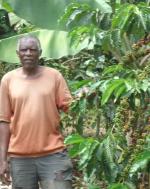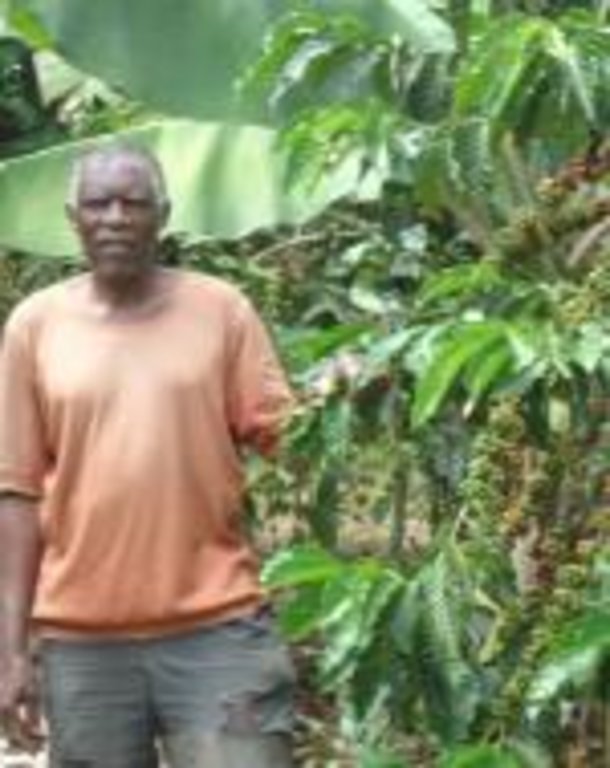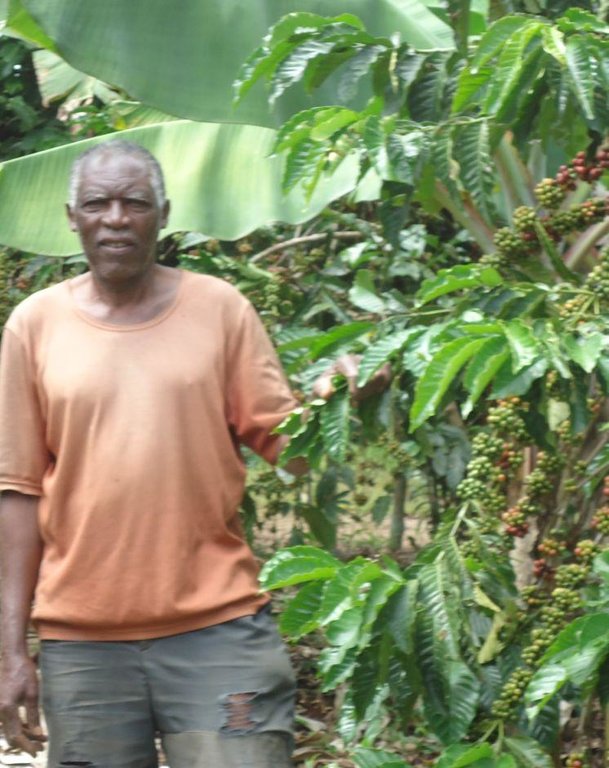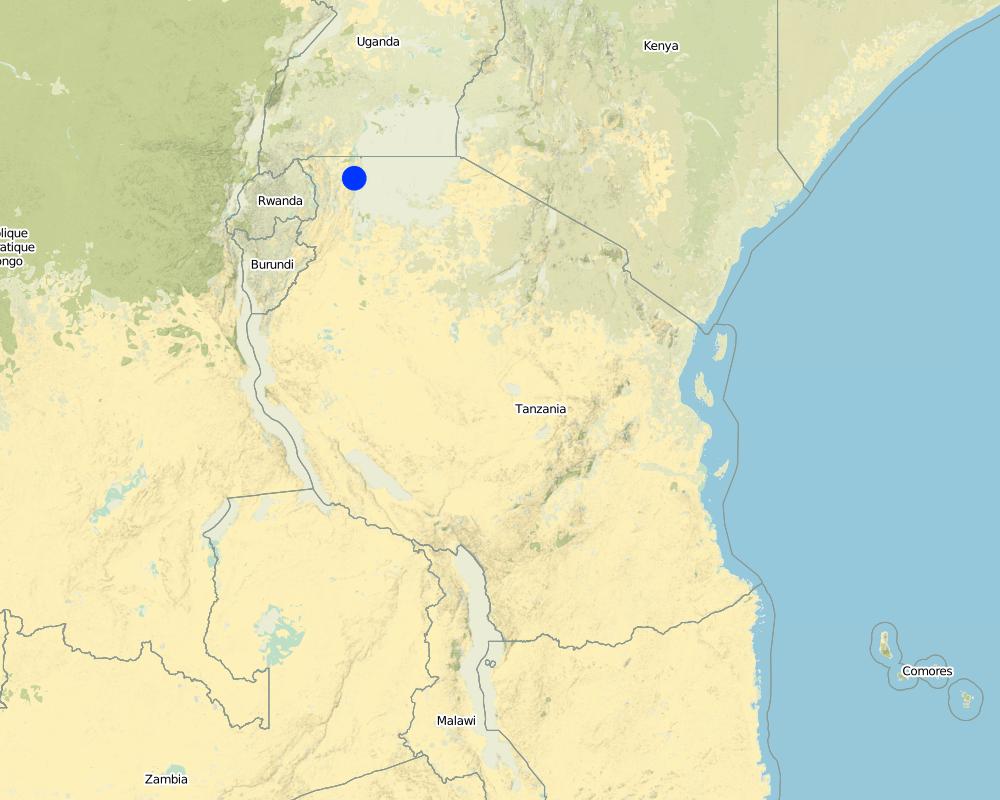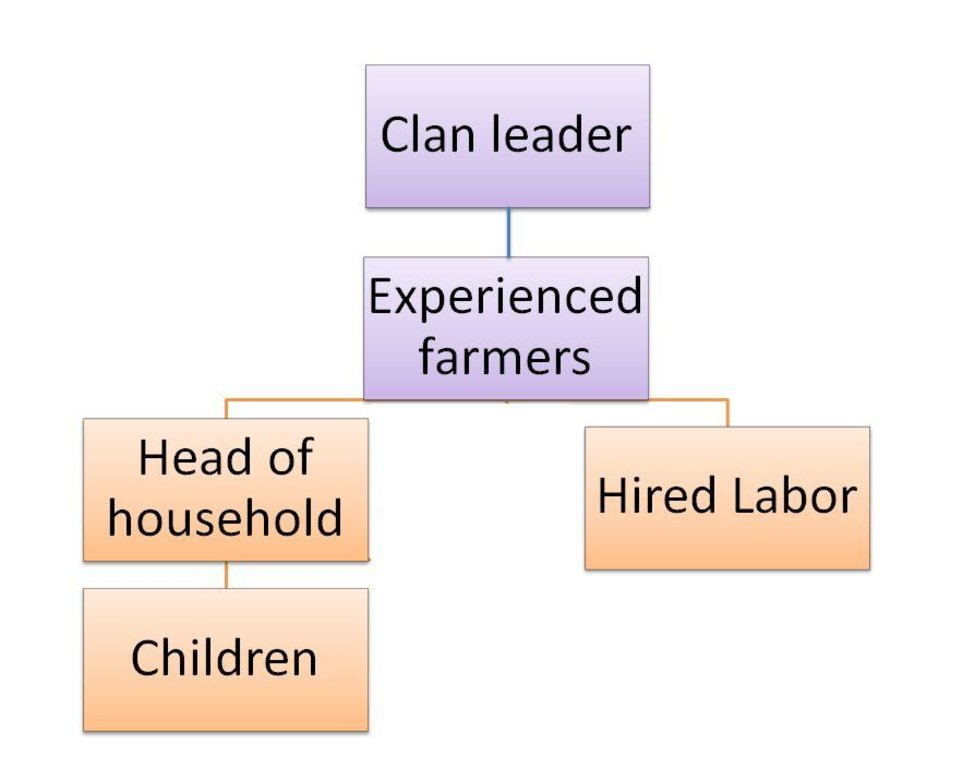Indigenous knowledge transfer [República Unida da Tanzânia]
- Criação:
- Atualização:
- Compilador/a: Godfrey Baraba
- Editor: –
- Revisor: Fabian Ottiger
Emikolele n'emyegesheleze. (HAYA)
approaches_2472 - República Unida da Tanzânia
Veja as seções
Expandir tudo Recolher tudo1. Informação geral
1.2 Detalhes do contato das pessoas capacitadas e instituições envolvidas na avaliação e documentação da abordagem
Especialista em GST:
Especialista em GST:
Especialista em GST:
Kaihura Fidelis
Kagera TAMP Project, National Project Manager
República Unida da Tanzânia
Nome do projeto que facilitou a documentação/avaliação da Abordagem (se relevante)
The Transboundary Agro-ecosystem Management Project for the Kagera River Basin (GEF-FAO / Kagera TAMP )Nome da(s) instituição(ões) que facilitou(ram) a documentação/avaliação da Abordagem (se relevante)
Bukoba district council (Bukoba district council) - República Unida da TanzâniaNome da(s) instituição(ões) que facilitou(ram) a documentação/avaliação da Abordagem (se relevante)
FAO Food and Agriculture Organization (FAO Food and Agriculture Organization) - Itália1.3 Condições em relação ao uso da informação documentada através de WOCAT
Quando os dados foram compilados (no campo)?
25/05/2012
O compilador e a(s) pessoa(s) capacitada(s) aceitam as condições relativas ao uso de dados documentados através do WOCAT:
Sim
1.4 Referência ao(s) questionário(s) sobre tecnologias da GST

Enhanced mulching in banana and coffee plantation [República Unida da Tanzânia]
Application of Thatch and Hyperrhenia Rufa grass mulch in banana and coffee plantation to reduce soil erosion, improve soil fertility and moisture and ensure high productivity
- Compilador/a: Iwona Piechowiak
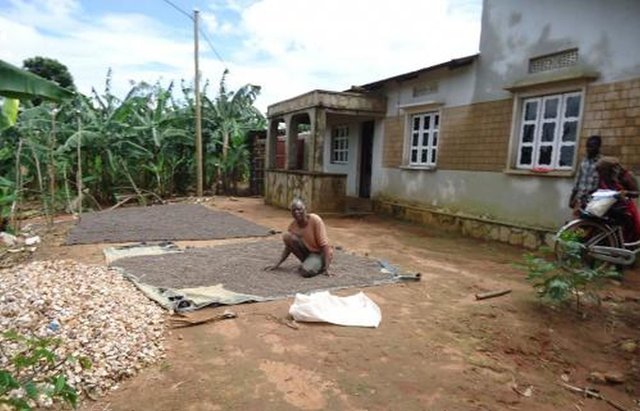
Buhaya agroforestry system [República Unida da Tanzânia]
Traditional agroforestry system comprising mixture of banana, coffee, fruit trees, biannual crops, annual crops and timber trees which together optimize the use of soil, moisture and space.
- Compilador/a: Godfrey Baraba
2. Descrição da abordagem de GST
2.1 Descrição curta da abordagem
Indigenous knowledge transfer, is a common phenomena in farming societies whereby elders taught younger generations the practical aspects in production and emphasizes the norms and proms in folk story tales.
2.2 Descrição detalhada da abordagem
Descrição detalhada da abordagem:
Aims / objectives: The main aim of this approach is to improve agricultural production through collaboration of households and the entire community. The approach ensures food security and income with land conservation. The approach is achieved by voluntary learning from the experienced elder farmers. This is achieved by creation of friendly environmental to implement the learning process. The approach is also characterized by traditional prons and norms of the young generation to inherit the elders property.
Methods: The elders spent evening hours to tell farming stories to the younger generation. These stories refer to the success of soil fertility improvement, water resources accessibility and utilization, land use type and farming practices in the community.
Also, practical aspect is attained by involving the younger generation in porting and allocating the land according to land use type.
Stages of implementation: 1. Experienced farmers telling farming stories to the younger while younger listen and ask questions.
2. The elders ask old sayings and elaborate their meaning.
3. Elders demonstrating to the younger, how farming activity are done.
4. The younger implement farming activity and plan for their future.
5.The land is allocated to the younger according to land use type.
6. The younger farmers now are in the position to train their successors.
Role of stakeholders: The major stakeholders are Clan leaders, Head of households, mother, children and hired labour. The roles of Clan leaders are to organize the farming story sessions to the elders and reinforce traditional land norms and proms. The roles of Head of household are to conduct evening farming stories at homestead, encouraging the younger to practice farming by giving incentive according to performance. The roles of the children and hired labour is to work in the head of household farms and ensure proms and proms abides.
Other important information: Nowdays, the approach succeeded to expand cropland beyond grasslands and forestland.
2.3 Fotos da abordagem
2.5 País/região/locais onde a abordagem foi aplicada
País:
República Unida da Tanzânia
Região/Estado/Província:
Tanzania
Especificação adicional de localização:
Bukoba District
Map
×2.7 Tipo de abordagem
- Tradicional/Indígena
2.8 Principais metas/objetivos da abordagem
The Approach focused mainly on SLM with other activities (Products diversification, livelihood improvements and land resouces inheretence.)
The main aim of the approach is to improve productivity and ensure younger generations productive land ownership and user rights.
The SLM Approach addressed the following problems: Lack of knowledge and skills of farm technologies, collaboration between households and community, eroded/weakened traditional norms, land ownership inequalities.
2.9 Condição que propiciam ou inibem a implementação de tecnologia/tecnologias aplicada(s) segundo a abordagem
Normas e valores sociais/culturais/religiosos
- Inibitivo
Land ownership inequalities, whereby women and girls are not allowed to inheret the clan land.
Treatment through the SLM Approach: Improve women participation in decision making
Disponibilidade/acesso a recursos e serviços financeiros
- Inibitivo
Farming activities regarded as volatile assets by most financial institutions
Treatment through the SLM Approach: Introduce and impliment subsidies policy.
Quadro institucional
- Inibitivo
The clan leaders not strong in terms of formal training. Weak reinforcement of laws and bylaws.
Treatment through the SLM Approach: Use extension service staffs to promote informal training.
Quadro jurídico (posse de terra, direitos de uso da terra e da água)
- Propício
The existing land ownership, land use rights / water rights moderately helped the approach implementation: Individual land ownership without lease smoothing the transfer of land from one parents to offspring. therefore assured perfect training grounds
- Inibitivo
Community not well knowledgeable on land laws.
Treatment through the SLM Approach: Train village land law to the community.
Conhecimento sobre GST, acesso a suporte técnico
- Inibitivo
Lack of farming technologies transfer.
Treatment through the SLM Approach: Facilitate extension services.
Outro
- Inibitivo
Some plant spps habours pests
Treatment through the SLM Approach: Planting of pecit repelant species. eg Kajaye
3. Participação e papel das partes interessadas envolvidas
3.1 Partes interessadas envolvidas na abordagem e seus papéis
- Usuários de terra/comunidades locais
Household and hired laborers
Adoption farmers tends to use grups for socilization and participation. The difference between the participation of men and women is that, women train children only, while men can also train hired laborers. Hired labour normally spent the day while folk story conducted at night. Labourers including men and women are disposal to men trainings.Women participate in training at all stages but are not involved in land allocation to the younger generations. Women: Have the rights to produce annual crops and decide on the income from it.
Younger: Are assured of land inheritance from their parents.
laboures: Are paid at the market price.
Poor households: assured food security as work for food, informal land renting i.e paying back the prorate produce.
- Governo local
Provides extension services for up scaling the aproach.
3.2 Envolvimento do usuários de terra/comunidades locais nas diferentes fases da abordagem
| Envolvimento do usuários de terra/comunidades locais | Especifique quem estava envolvido e descreva as atividades | |
|---|---|---|
| Iniciação/motivação | Automobilização | Household members. To attend and particiapte in appropriate sessions. |
| Planejamento | Automobilização | Clan leaders: To identify and select problems and find solutios Head of Household: Children. Siblings: Hired labour: |
| Implementação | Automobilização | Head of the clan: To organise the sittings. Head of Household:To inform the family and conduct the dialogue Children: To participate in farm production, aceptance of allocated land, Using the located land according to land use type. Siblings: To facilitate divison of labour Hired labor: |
| Monitoramento/avaliação | Nenhum | Clan head: To call the meeting Community leaders: To visit farms and other land, To observe and deliver the assessments. |
| Research | Passivo | Few farmers participated in adaptive resarch on Kibanja system 1n 1993. |
3.3 Fluxograma (se disponível)
3.4 Decisão sobre a seleção de tecnologia/tecnologias de GST
Especifique quem decidiu sobre a seleção de tecnologia/tecnologias a serem implementadas:
- Principalmente usuários da terra, apoiados por especialistas em GST
Explique:
Indigenous trainings are formalized by extension staffs. Coffee and Vanilla buyers tends to supervise farms for products assurance.
Decisions on the method of implementing the SLM Technology were made by mainly by land users supported by SLM specialists. Extension staffs monitor, evaluate and advise the proper methods up scaling.
4. Suporte técnico, reforço das capacidades e gestão do conhecimento
4.1 Reforço das capacidades/formação
Foi oferecida formação aos usuários da terra/outras partes interessadas?
Sim
4.2 Serviço de consultoria
Os usuários de terra têm acesso a um serviço de consultoria?
Sim
Especifique se foi oferecido serviço de consultoria:
- nas áreas dos usuários da terra
Descreva/comentários:
Name of method used for advisory service: Train and Visit (T&V); Key elements: Subject Matter Specialist trin field staff on fortnight bases. Field staff visit Progressive farmers and train them, Field Staffs visit Farmers to assess the performance and give feed back to Subject Matter Specialist; The method is very effective under a strong economical situation.
Advisory service is inadequate to ensure the continuation of land conservation activities; Farmer field schools can't reach farming communities with extension staffs based on Ward level.
4.3 Fortalecimento da instituição (desenvolvimento organizacional)
As instituições foram fortalecidas ou estabelecidas através da abordagem?
- Sim, pouco
Especifique a que nível (níveis) as instituições foram fortalecidas ou estabelecidas:
- Local
- Agricultural advisory services.
4.4 Monitoramento e avaliação
Monitoramento e avaliação são partes da abordagem?
Sim
Comentários:
bio-physical aspects were regular monitored by land users through observations; indicators: activities according to the season.
bio-physical aspects were ad hoc monitored by land users through measurements; indicators: Customary land law, land inheretance protocals.
socio-cultural aspects were regular monitored by land users through observations; indicators: Harvesting season
socio-cultural aspects were ad hoc monitored by other through measurements
economic / production aspects were regular monitored by land users through observations
management of Approach aspects were regular monitored by None through observations
management of Approach aspects were ad hoc monitored by None through measurements
There were few changes in the Approach as a result of monitoring and evaluation: Monitoring and Evaluation component took very minimal attention.
There were no changes in the Technology as a result of monitoring and evaluation
4.5 Pesquisa
A pesquisa foi parte da abordagem?
Sim
Dê mais detalhes e indique quem realizou a pesquisa:
Research was carried out on station
5. Financiamento e apoio material externo
5.1 Orçamento anual para o componente de GST da abordagem
Caso o orçamento exato seja desconhecido, indique a faixa:
- < 2.000
Comentários (p. ex. principais fontes de recursos/principais doadores):
Approach costs were met by the following donors: local community / land user(s): 100.0%
5.2 Apoio financeiro/material concedido aos usuários da terra
Os usuários da terra receberam apoio financeiro/material para a implementação de tecnologia/tecnologias?
Não
5.3 Subsídios para entradas específicas (incluindo mão-de-obra)
Se a mão-de-obra pelos usuários da terra foi uma entrada substancial, isso foi:
- Voluntário
Comentários:
Mainly family labour is the major component of input.
5.4 Crédito
Foi concedido crédito segundo a abordagem para atividades de GST?
Não
5.5 Outros incentivos ou instrumentos
Foram utilizados outros incentivos ou instrumentos para promover a implementação das tecnologias de GST?
Sim
Caso afirmativo, especifique:
Agricultural advisory services.
6. Análise de impactos e declarações finais
6.1 Impactos da abordagem
A abordagem melhorou as questões de posse de terra/diretos do usuário que inibiam a implementação das tecnologias de GST?
- Não
- Sim, pouco
- Sim, moderadamente
- Sim, significativamente
6.2 Principal motivação dos usuários da terra para implementar a GST
- Produção aumentada
Diversification asure grand production
- Lucro (lucrabilidade) aumentado, melhora da relação custo-benefício
Implementation costs requires on family labour and commitments
- normas e regulamentos (multas)/aplicação
Farming land inheritance protocals and land norms enforcement are ver crucial components.
6.3 Atividades de sustentabilidade de abordagem
Os usuários da terra podem manter o que foi implementado através da abordagem (sem apoio externo)?
- Sim
Caso afirmativo, descreva como:
It has been in application for very long time, and no signs of retardation observed.
6.4 Pontos fortes/vantagens da abordagem
| Pontos fortes/vantagens/oportunidades na visão do compilador ou de outra pessoa capacitada |
|---|
| Local resource person, obedience and committed community. |
7. Referências e links
7.1 Métodos/fontes de informação
- visitas de campo, pesquisas de campo
- entrevistas com usuários de terras
7.2 Referências às publicações disponíveis
Título, autor, ano, ISBN:
http://www.fao.org/nr/kagera/en/
Disponível de onde? Custos?
Kagera TAMP project website
Links e módulos
Expandir tudo Recolher tudoLinks

Enhanced mulching in banana and coffee plantation [República Unida da Tanzânia]
Application of Thatch and Hyperrhenia Rufa grass mulch in banana and coffee plantation to reduce soil erosion, improve soil fertility and moisture and ensure high productivity
- Compilador/a: Iwona Piechowiak

Buhaya agroforestry system [República Unida da Tanzânia]
Traditional agroforestry system comprising mixture of banana, coffee, fruit trees, biannual crops, annual crops and timber trees which together optimize the use of soil, moisture and space.
- Compilador/a: Godfrey Baraba
Módulos
Não há módulos


